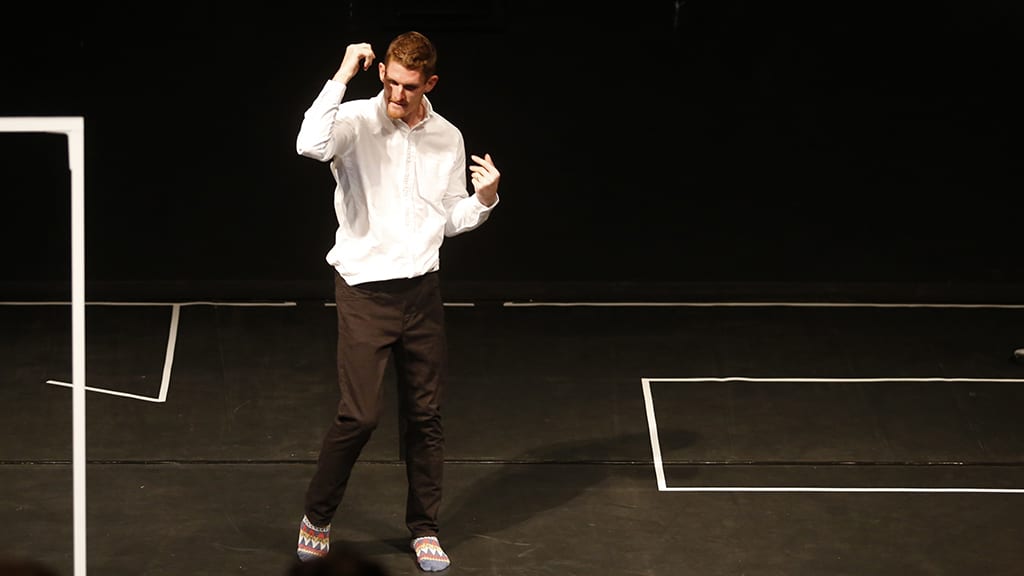Gender fuck(er), a co-creation with British choreographer Graham Adney and Israeli choreographer Keren Rosenberg, kicks off. It might be the joker in the Wild Card pack at Sadler’s Wells, featuring new, up and coming dance-makers. It’s overly long. While its introductory polemic ‘challenges the division of roles by unleashing and building a masculine conviction within a vulnerable yet powerful female body looking into heterosexuality through a queer gaze.’ No, it doesn’t. There is no punctuation in the statement or in the overall dance vocabulary.
Keren Rosenberg spends 45 minutes out of 50 strutting, contortionist-style, morphing from female to male in extremis: head-banging rocker, deco-shaped shell-girl, a spiv, a-cock-for-a-day lad/ladette and a bin-liner-bra-clad nymphet who sings, whispers, and keeps asking the question do you like me now? She is replaced in the last 5 by a male gender-challenger in elegant, grey secretarial gear and straight-cut wig who asks ‘you wanna know how I go down?’ No I don’t. The sum of the parts: not R & B just early stages R & D.
Dan Daw’s ‘On One Condition’ fares better, though it too is over-long. There is a dynamic, white floor-plan of his house, indicating rooms, ‘stations ‘and trigger memories; all ‘stripped-back’ and monochrome. The black-box space is heavy and oppressive. Daw first crosses the stage in his underpants and then gets dressed. It is a slow, difficult, yet precise effort; strangely hypnotic as it underlines a known, shared activity and his mastery of it.
Daw is a showman with cheeky grin and direct gaze. He knows how to work an audience and blend the lines of pathos, humour with tall and sad tales of growing up in Southern Australia, with a passion for movement and a disability. Where Gender Fuck(er) showed little regard for its audience, Dan Daw uses the composite craft-box to tell his stories with greater awareness.
These talk about home, love, acceptance and normality: ‘walking the kerb’ beside his grandfather, ‘our time’ he calls it, placing one foot in front of the other, is a simple motif Daw returns to time and again. A pair of white trainers is the last bit of kit he puts on. Later he takes them off and re-places them on their square as he recalls his scholarship to Japan. This simple gesture becomes a snapshot of a nation.
The V-vectored aerial links to the time he made his mother laugh as they watched TV; while narrative threads, such as the reward of an ice-cream if he does his buttons up quickly, refer straight back to the first sequence as he dresses himself. Finally, there is a down-under-deep-dig at contemporary dance, ballet as Daw rocks to and fro arms swinging in perfect harmony.
At the close, accompanied by the only light change in the piece, he dances to Saint Saens’ Dying Swan; Daw could be referring equally to the desert as to Pavlova’s signature performance. ‘These specially curated (Wild Card) evenings feature exploratory approaches to choreography.’ Close but no cigar, Dan Daw. There is a responsibility to engage as well as inform an audience. ‘On One Condition’, with its multi-layered title, does this; the first offering, does not.

